- Home
- Patrick Robinson
Nimitz Class
Nimitz Class Read online
Nimitz Class is respectfully dedicated to the officers and men of the U.S. Navy and the Royal Navy…to all of those who go down to the sea in warships, and who sometimes face great peril in great waters.
Contents
Author’s Note
Cast of Principal Characters
Prologue
Chapters:
1, 2, 3, 4, 5, 6, 7, 8, 9, 10, 11, 12, 13
Epilogue
Afterword
Acknowledgments
About the Author
Also by Patrick Robinson
Praise for Patrick Robinson
Critical Acclaim for Nimitz Class
Credits
Copyright
About the Publisher
Diagrams, Maps, and Documents
Flight Deck Layout of a Nimitz-Class Aircraft Carrier
The Arabian Sea and Carrier Battle Group Operating Area
Battle Group Disposition
Radar picture from the Thomas Jefferson
Staff in Confidence
The Approaches to the Iranian Naval Base at Bandar Abbas
Marine Chart of the Bosporus
Waiting for the Kilo: U.S. navy’s Submarine Barrier Southwest of the Falklands
Author’s Note
IMAGINE NEW YORK’S EMPIRE STATE BUILDING, TURNED flat on its side, moving across the ocean at around thirty knots, a big, white bow-wave surging over its radio tower, and you have a good approximation of a one-hundred-thousand-ton U.S. Navy aircraft carrier on patrol.
The huge $4 billion warship is 1,100 feet long, and powered by its own private nuclear plant. This is the colossus, the Nimitz-Class carrier, named after the Texas-born World War II admiral, Chester W. Nimitz, who masterminded the ambush which destroyed the Japanese at the Battle of Midway in June 1942, sinking four of Admiral Yamamoto’s finest aircraft carriers and 332 of his aircraft.
Today, these modern U.S. carriers rove the oceans in his name, ruling a five-hundred-mile radius of air, sea, and land wherever they move. But the Nimitz-Class giants do not travel alone. They are normally accompanied by a small flotilla of guided-missile cruisers, destroyers, and frigates, and two hunter-killer submarines. Loosely arranged in classic operational disposition, this Carrier Battle Group is known in Navy shorthand as the CVBG.
The group is the undisputed master of the skies, the oceans, and the dark, menacing reaches of the kingdoms beneath the waves. Alone on his bridge, the admiral who commands it looks out on the biggest, fastest, deadliest warship ever built. He is the Warlord of the twenty-first century.
At the hub of his ten-ship surface group, there are eighty fighter/ attack aircraft arrayed on the deck, with the guided-missile escorts in loose proximity. The admiral’s nuclear submarines ride shotgun far out in front.
Smaller countries of military wealth and sophistication—the United Kingdom, France, Germany—lack the capacity to raise even one comparable force. Not even Russia with its gigantic, moribund Navy, can match the power of the American Carrier Battle Group. The United States runs twelve of them, each carrier alone costing $440 million a year to operate.
Fifty-five percent of the money spent annually on defense by all countries is expended by the Pentagon. Each aircraft carrier sustains a gigantic seaborne staff of six thousand men, with close to six hundred officers.
Deep in the lower decks of the ship, the cooks provide eighteen thousand meals every twenty-four hours, plus a small meal for the midnight watch (MIDRATS). Three times a day the whistle blows, and they begin unpacking food from boxes on a scale almost beyond belief. Sometimes hundreds of big gleaming cans of ravioli or meatballs are being thrown, simultaneously, expertly, from the unpackers, to the kitchen hands, then on to the cooks.
A big-deck carrier stands about twenty-four-stories high from keel to masthead, with a 260-foot-wide flight deck. She draws forty feet below the waterline. Powered by two big G.E. PWR nuclear reactors, her range and time at sea are almost infinite, limited only by the stamina of the crew. In addition there are four steam turbines, generating 260,000 horsepower. Four propeller shafts, each the size of a hundred-year-old California redwood, drive her forward.
Of her 6,000 personnel, 3,184 are concerned solely with moving the great warship safely about the oceans. There are 2,800 aircrew on board, responsible for flight operations and maintenance of the aircraft. The admiral, whose concerns are battle group strategy, tactics, efficient firepower, and surveillance of a potential enemy, travels with a staff of twenty-five officers and forty-five men. His operations center is the bottom line of the U.S. Navy’s offensive and defensive charter.
The admiral can, at will, move heavy U.S. muscle closer to an enemy’s border than any other commander in history. He can move freely through international waters. He is completely mobile, self-contained, and deadly to any opponent. In the bowels of the ship there are stored missiles with nuclear warheads.
The carrier is flanked by Aegis missile cruisers, whose computer controlled weapons can hit and obliterate an incoming air attack traveling at up to twice the speed of sound. The Battle Group’s close-in destroyers can take care of any air, surface, or underwater threats. The guided missile frigates, with their LAMPS helicopters, provide an anti-submarine dragnet which can stretch for hundreds of miles in every direction.
The nuclear killer submarines, which can stay underwater for years if necessary, patrol hundreds of miles, clearing the trail for the carrier and its consorts. Armed with wickedly accurate wire-guided torpedoes and cruise missiles, they seek principally to destroy their enemy counterparts.
A vast electronics system ties the group together in a tight network of communications, relaying minute-by-minute, ops room–to– ops room, ship-to-ship, the operational state of this moving cell of almost inconceivable power. The Carrier Battle Group is perfectly capable of eliminating, simultaneously, threat from air, surface, and underwater.
The spearhead of its attack is its bomber force—twenty deadly accurate, all-weather aircraft, archenemies to any ship hostile to the United States, plus twenty FA-18 supersonic fighter/attack Hornets. To defend the Battle Group and/or to provide cover for the bomber force, there are another twenty fighter aircraft—principally the heavily gunned missile-launching F-14 Tomcat and the supersonic F-14D Super-Tomcat. In an emergency, they can launch these aircraft with the huge steam-driven catapults, two at a time, off the five-acre flight deck—zero to 150 mph in two seconds.
In addition there are usually four EA-6B Prowlers, another heavy-hitter which possesses the unique ability to jam enemy radar completely, rendering any opponent impotent, a sitting duck for the U.S. air offensive line. The other great electronic specialist aircraft on deck is the S3 Viking, a search-and-strike torpedo-launching attack plane, which can probe underwater from the air, and destroy an enemy submarine hundreds of miles out from the main group.
On deck and in the hangars below there is usually a fleet of eight helicopters—Cobra gunships, Sea Kings, and probably one massive CH-53 transporter, which can carry, and land, either attack, or rescue, teams of up to fifty-five U.S. Marines.
The aircraft carrier itself is equipped with missile and gunnery capability, the Nimitz Class being the most heavily armored warship afloat. Her double hull and heavy sealed compartments along the waterline make her easily the most survivable warship in Naval history.
Every major team needs a quarterback, and in the CVBG the big plays are called by the E2C Early Warning and Control, Hawkeye.
With its great radar dome sending and receiving the electronic beams above the aircraft’s computerized ops room, this heavyweight Naval warplane makes it just about impossible for any enemy to move undetected within a thousand-mile range of the carrier.
The carrier’s strike
aircraft are supersonic and on the surface the carrier itself can travel up to five hundred miles in a day, controlling the sea wherever she sails. With forty of America’s forty-two allies residing across various oceans from the U.S. mainland, it is as well that 85 percent of all the land on this planet lies within range of an American Carrier Battle Group. And 95 percent of the world’s people.
Yet few of these hundreds of millions of citizens realize their lives are lived in comparative peace and security because of the iron-fisted defense capability of the U.S. Navy. Most of them believe this security has been orchestrated by the United Nations, or NATO, or by some quasi-European defense project. But when push comes to shove, it is the U.S. Carrier Battle Group, the fortress at sea, that matters. This is the force that is apt to show up off the shores of potential aggressors.
Unreachable by air or sea attack, virtually unsinkable by any conventional underwater weapon, surrounded by a wall of guided missiles and tracking electronics, protected twenty-four hours a day by a sweeping, computerized radar field, home to its own fighter-attack supersonic air strike force…
No word in the English language accurately describes the invincibility of the U.S. Navy’s aircraft carriers, save one: impregnable.
Almost.
Cast of Principal
Characters
Senior Military Command
The President of the United States (Commander-in-Chief, U.S. Armed Forces)
General Joshua R. Paul (Chairman of the Joint Chiefs)
Vice Admiral Arnold Morgan (Director, National Security Agency)
Carrier Battle Group
USS Thomas Jefferson
Rear Admiral Zack Carson (Flag Officer)
Captain Jack Baldridge (Group Operations Officer)
Captain Carl Rheinegen (Captain of the Jefferson)
Lieutenant William R. Howell (fighter pilot)
Lieutenant Freddie Larsen (Radar-Intercept Officer)
Lieutenant Rick Evans (Landing Signal Officer)
Ensign (Junior Grade) Jim Adams (Arresting Gear Officer)
Captain Art Barry (Commanding Officer USS Arkansas)
Lieutenant Commander Chuck Freeburg (Anti-Submarine Warfare Officer [ASWO] USS Hayler)
Lieutenant Joe Farrell (Navy pilot)
U.S. Navy Senior Command
Admiral Scott F. Dunsmore (Chief of Naval Operations)
Admiral Freddy Roberts (Vice CNO)
Admiral Gene Sadowski (C-in-C Pacific Command)
Admiral Albie Lambert (C-in-C Pacific Fleet)
Admiral Schnider (Head of Naval Intelligence)
Vice Admiral Archie Carter (Commander, Fifth Fleet)
U.S. Navy Personnel
Lieutenant Commander Bill Baldridge (Naval Intelligence)
Lieutenant Commander Jay Bamberg (Assistant to the CNO)
USS Columbia
Commander Cale “Boomer” Dunning (Commanding Officer)
Lieutenant Commander Jerry Curran (Combat Systems Officer)
Lieutenant Commander Lee O’Brien (Marine Engineering Officer)
Lieutenant Commander Mike Krause (Executive Officer)
Lieutenant David Wingate (Navigation Officer)
U.S. Navy SEALS
Admiral John Bergstrom (Commander, Special War Command, SPECWARCOM)
Commander Ray Banford (SEAL Mission Controller)
Lieutenant Commander Russell Bennett (Platoon Leader, SEAL Number Three Team)
Lieutenant (Junior Grade) David Mills (SEAL SDV driver)
Political and Presidential Staff
Robert MacPherson (Secretary of Defense)
Harcourt Travis (Secretary of State)
Dick Stafford (White House Press Secretary)
Sam Haynes (National Security Adviser)
Louis Fallon (White House Chief of Staff)
CIA Officers
Jeff Zepeda (expert on Iran)
Major Ted Lynch (Middle East financial specialist)
Family Members
Grace Dunsmore (wife of CNO)
Elizabeth Dunsmore (daughter of CNO)
Emily Baldridge (mother of Jack and Bill)
Ray Baldridge (brother of Jack and Bill)
Margaret Baldridge (Jack’s wife)
Royal Navy Personnel
Admiral Sir Peter Elliott (Flag Officer Submarines)
Captain Dick Greenwood (FOSM’s Chief of Staff)
Lieutenant Andrew Waites (Flag Lieutenant)
Admiral Sir Iain MacLean (Retired FOSM)
Lieutenant Commander Jeremy Shaw (Commanding Officer HMS Unseen)
Family Members
Lady MacLean (“Annie,” wife of Sir Iain)
Laura Anderson (daughter of Sir Iain and Lady MacLean)
Senior Foreign Officers
General David Gavron (Military Attaché, Israeli Embassy, Washington)
Vice Admiral Vitaly Rankov (Head of Russian Naval Intelligence)
Foreign Navy Personnel
Leading Seaman Karim Aila (Dock Sentry, Iranian Navy)
Prologue
DEEP IN THE MEDITERRANEAN SEA, HALFWAY BETWEEN the Greek mainland and the long western headland of Crete, lies the rough and rugged island of Kithira. It is a coarse rock, twenty miles long at most, set in the middle of a shining and be jeweled sea.
Along the eastern end of the Mediterranean there is a pure, transparent light which seems to flood the depths of the water. This is a paradise for visiting scuba divers, but for local fishermen, the azure ocean which surrounds them is a harsh and unforgiving place. There are not enough fish anymore. And life is as hard as it has ever been.
It was 5 A.M. on a hot morning early in July. The sun was just rising, and the fishing boat was sailing close to the rocky shore on the south side. Up on the portside of the bow, his feet trailing over the side, sat sixteen-year-old Dimitrios Morakis. He was in deep trouble.
On the previous afternoon he had managed to lose the only good net his family owned, and now his father Stephanos sat, unshaven and grumpy, on the tiller. The man was secretly proud of his golden-skinned son. And he stared at the boy’s Etruscan nose, a mirror image of his own, and the large hands, too powerful for the slender, youthful body; the boy’s genetic bounty from a long line of Kithiran fishermen.
Nonetheless, Stephanos was still peevish. “We’d better find it,” he said, unnecessarily. And in a light morning breeze, they slapped along, against the wavelets, while out to the east, for a few translucent moments, the earth seemed to rise up through veils of scarlet and violet.
The net showed up more or less where Stephanos thought it would be, driven into a curved outcrop of rock by the unvarying Aegean currents. Lost nets had been washing up against those particular rocks for centuries.
The problem was, it was jammed. Working in the water for almost half an hour, Dimitrios was unable to free it. “It’s caught up way below the surface,” he yelled to his father. “I’ll get back on the boat and then dive deep with a fishing knife.”
Three minutes later the boy split the water, headfirst, kicking his way downward. In the crystal clear depths, he found the bottom of the net, entwined and stuck in a crevasse between two rocks. There was no option but to cut it.
He stuck out his left hand to give himself purchase, and slashed the knife sideways. The net came free, and as it did so, Dimitrios tugged the twisted cord from the V-shaped gap in the rocks. He had been underwater for twenty-four seconds now, and he needed to surface.
But he was kicking against a weight on his shoulders. He twisted left and saw, still resting on his arm, two large black boots. Dimitrios pushed away and even in the water the weight was considerable, because these boots contained one full-sized, very drowned, human body, trapped by one arm in the ancient rocks of Kithira.
The other arm flapped free, skeletal. It had been eaten by fish and was swaying in the morning tide. Dimitrios stared at the white, bloated head, the eye sockets empty, the flesh on one side stripped from the skull, the teeth still there, the half-mo
uth grinning grotesquely in the clear water. It was a phantasm, straight from the imagination of the devil himself.
Choking with disgust, Dimitrios stared at the grisly cadaver as it continued performing its hideous slow-motion ballet just beneath the surface, the one arm and both legs rising and falling in the gentle swell, the body spot-lit by the finely focused underwater rays of the clear Aegean sun.
Then he turned and kicked with the frenzy of the truly terrified, desperate for air, driven by the ludicrous thought that somehow the specter would find a way to pursue him. He glanced down as he went, and as he did so, he noticed the sun creating a bright light on the dark blue jersey which covered the hideous white balloon of the waterlogged body—the light glistened upward, reflecting thinly, from a tiny, two-inch-long silver submarine badge, inlaid with a five-pointed red star.
1
April 22, 2002.
The Indian Ocean.
On board the United States Aircraft Carrier Thomas Jefferson. 9S, 92E. Speed 30.
THEY HAD WAVED HIM OFF TWICE NOW. AND EACH TIME Lieutenant William R. Howell had eased open the throttle of his big F-14 interceptor/attack Tomcat and climbed away to starboard, watching the speed needle slide smoothly from 150 knots to 280 knots. The acceleration was almost imperceptible, but in seconds the lieutenant saw the six-story island of the carrier turn into a half-inch-high black thimble against the blue sky.
The deep Utah drawl of the Landing Signal Officer standing on the carrier stern was still calm: “Tomcat two-zero-one, we still have a fouled deck—gotta wave you off one more time—just an oil leak—this is not an emergency, repeat not an emergency.”
Lieutenant Howell spoke quietly and slowly: “Tomcat two-zero-one. Roger that. I’m taking a turn around. Will approach again from twelve miles.” He eased the fighter plane’s nose up, just a fraction, and he felt his stomach tighten. It was never more than a fleeting feeling, but it always brought home the truth, that landing any aircraft at sea on the narrow, angled, 750-foot-long, pitching landing area remained a life-or-death test of skill and nerve for any pilot. It took most rookies a couple of months to stop their knees shaking after each landing. Pilots short of skill, or nerve, were normally found working on the ground, driving freight planes, or dead. He knew that there were around twenty plane-wrecking crashes on U.S. carriers each year.

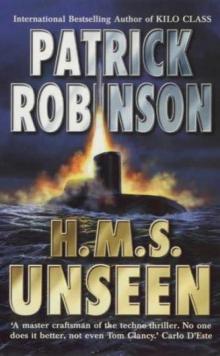 H.M.S. Unseen am-3
H.M.S. Unseen am-3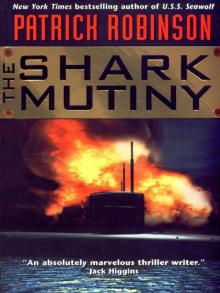 The Shark Mutiny (2001)
The Shark Mutiny (2001) Hunter Killer am-8
Hunter Killer am-8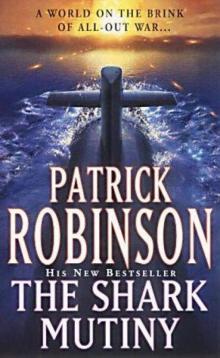 The Shark Mutiny am-5
The Shark Mutiny am-5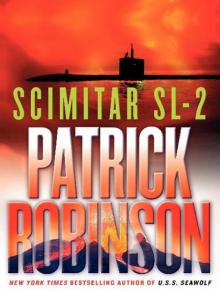 Scimitar SL-2
Scimitar SL-2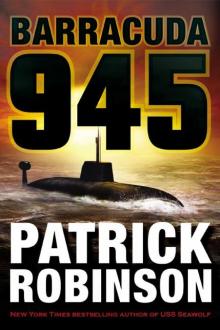 Barracuda 945 am-6
Barracuda 945 am-6 Hunter Killer
Hunter Killer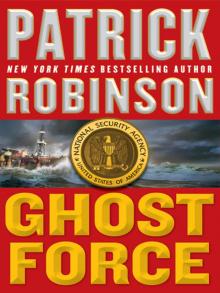 Ghost Force
Ghost Force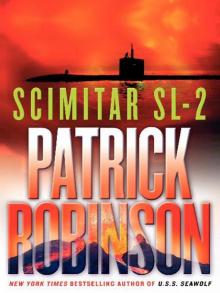 Scimitar SL-2 (2004)
Scimitar SL-2 (2004) Kilo Class am-2
Kilo Class am-2 The Lion of Sabray
The Lion of Sabray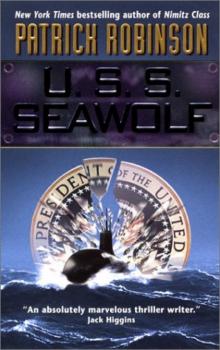 U.S.S. Seawolf am-4
U.S.S. Seawolf am-4 Ghost Force am-9
Ghost Force am-9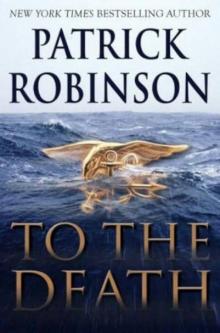 To the Death am-10
To the Death am-10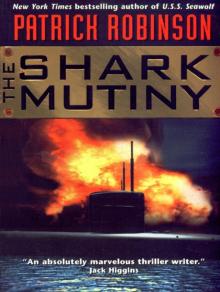 The Shark Mutiny
The Shark Mutiny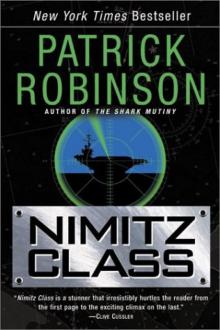 Nimitz Class am-1
Nimitz Class am-1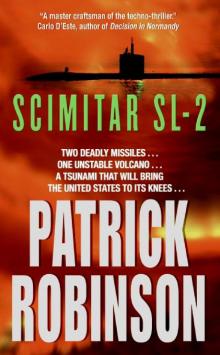 Scimitar SL-2 am-7
Scimitar SL-2 am-7 Barracuda 945
Barracuda 945 Intercept
Intercept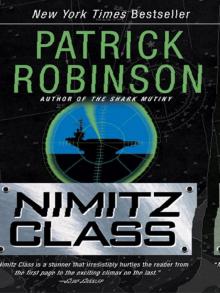 Nimitz Class (1997)
Nimitz Class (1997)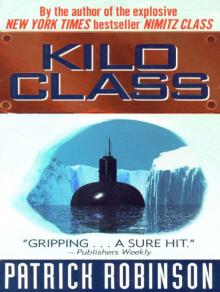 Kilo Class
Kilo Class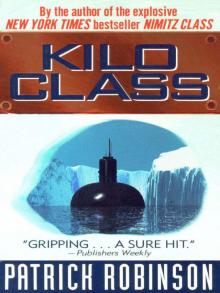 Kilo Class (1998)
Kilo Class (1998) Diamondhead
Diamondhead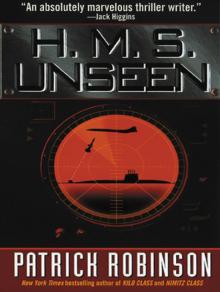 H.M.S. Unseen
H.M.S. Unseen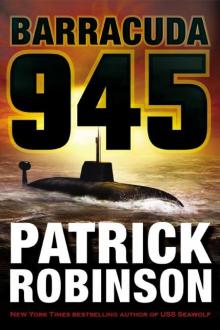 Barracuda 945 (2003)
Barracuda 945 (2003)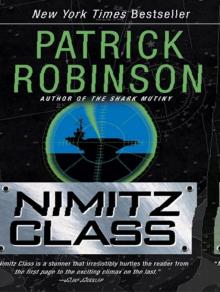 Nimitz Class
Nimitz Class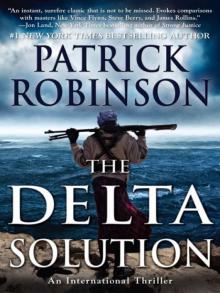 The Delta Solution
The Delta Solution U.S.S. Seawolf
U.S.S. Seawolf